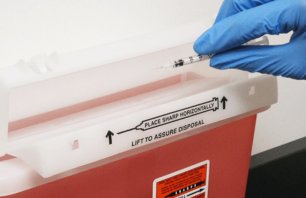How Health Care Organizations Can Prepare for an OSHA Inspection
When a Compliance Safety and Health Officer from the Occupational Safety and Health Administration (OSHA) shows up for an inspection, one of the first things he or she will do is ask to see your organization’s Bloodborne Pathogens (BBP) Exposure Control Plan (ECP). This is the required document that details how your facility avoids inadvertent staff exposure to bloodborne pathogens and outlines what happens when an incident occurs. Make sure to comply with exposure control plan components to be prepared for communicable disease control if the need arises.
3 Ways to Make Sure You’re Covered
It’s crucial to verify that your plan is acceptable well before OSHA arrives at your facility. Organizations should commit to conducting annual reviews and updates of their plans to make sure they are up to par. Asking these three questions can guide the process:
1. Does Your Written Exposure Control Plan Contain the Required Elements?
OSHA looks for several exposure control plan components when inspecting an organization’s written ECP. Components for an ECP plan should include:
- How your organization identifies which workers could be exposed as high ris as part of their jobs
- What methods you use for staff protection and compliance, including universal and standard precautions, engineering controls, work practice controls, administrative controls and personal protective equipment
- Policies outlining Hepatitis B vaccination and addressing post-exposure evaluation and follow-up
- A plan for communicating potential hazards
- Recordkeeping as required by the Standard
- Procedures for the evaluation of circumstances surrounding exposure incidents
While this list is not exhaustive, it gives an idea of the level of detail that OSHA requires.
2. Does Your Written Plan House the Appropriate Documentation?
The OSHA officer will need to determine if your written ECP contains the right documentation and understand how often your organization revisits the plan and whether it’s easily accessible to staff. He or she will be looking for the following elements within your plan:
- Documentation that the plan is reviewed and updated at least annually
- Documentation that safer medical devices were considered and implemented
- Documentation that the input of non-managerial employees was solicited
Organizations should also ensure that a description of how staff can readily access the plan is available.
3. Have Staff Been Effectively Trained About the Bloodborne Pathogens Standard?
Finally, the officer will want to verify that staff have been trained on the hazards that are present in the workplace as well as how to protect themselves from those hazards. He or she will also check that staff are familiar with the ECP and the requirements of the Standard. This training must be documented, so the officer can confirm it occurred.
An Expert Resource Can Help
Like many other regulations, OSHA Standards can be complex and constantly evolving. To make sure your ECP includes the necessary elements and that your organization is fully covered, it can be beneficial to partner with a compliance expert that has deep experience in OSHA rules and regulations. At Stericycle, we offer in-depth ECP training as well as sample plans that include the required content, which can be customized to your unique facility needs and circumstances and help ensure your organization is set up for success.



